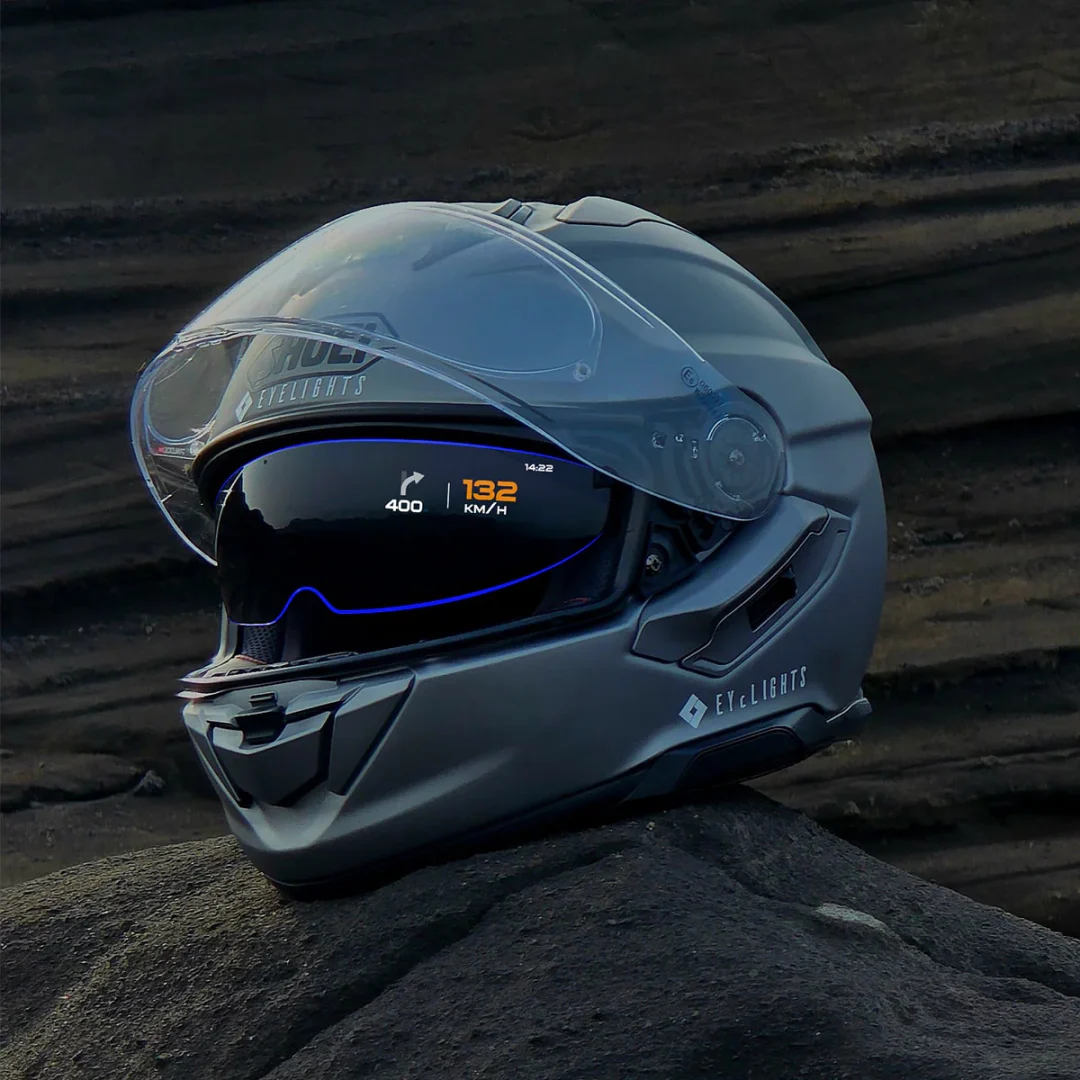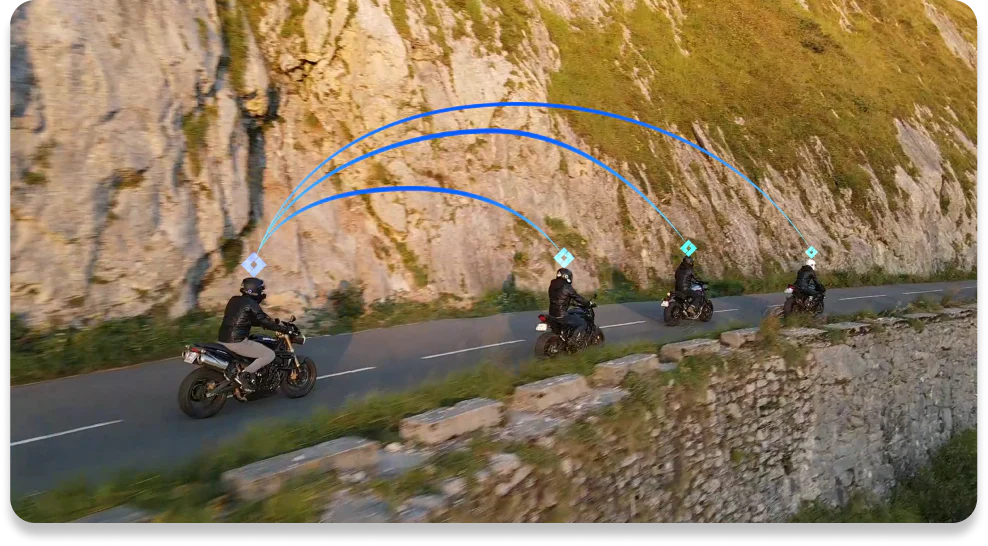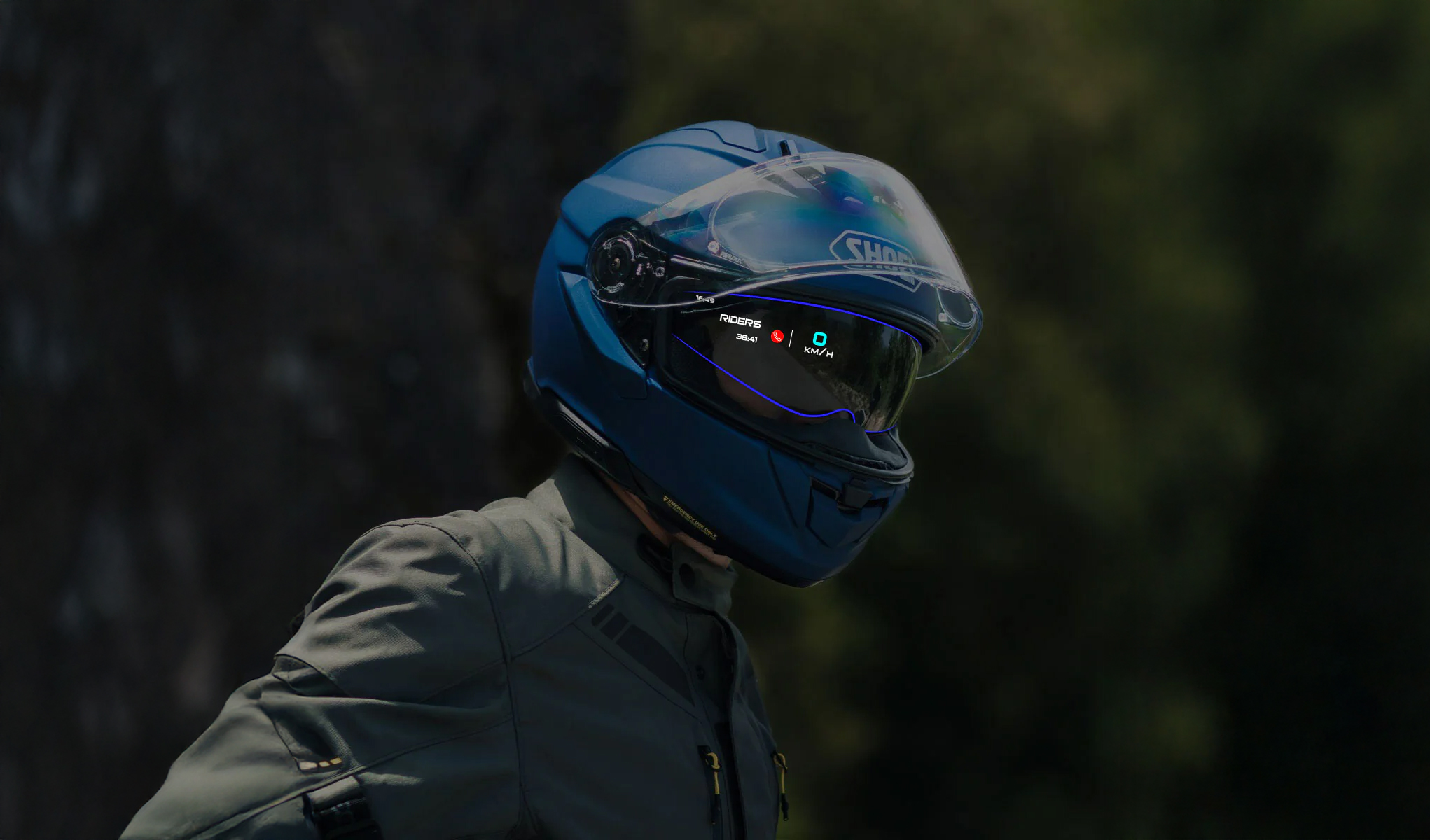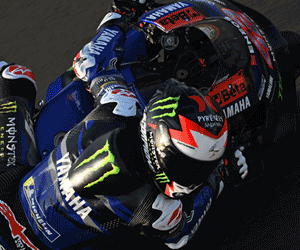- Shoei releases the world’s first visor-mounted HUD motorcycle helmet based on the GT-Air 3 platform.
- Features include nano-OLED display, navigation, speed data, comms, and full Bluetooth/mesh integration.
- HUD helmets expected to reach NZ, though local pricing and availability are still unconfirmed.
Shoei has officially entered the smart-helmet race with what it claims is the world’s first motorcycle helmet featuring a visor-mounted Head-Up Display (HUD), and it might just be the biggest leap forward in helmet tech in years. Built on the GT-Air 3 platform, the new “Smart” variant integrates an Augmented Reality display directly onto the visor itself, projecting key information into the rider’s line of sight without adding bulk or distracting hardware.

Developed in partnership with French tech specialist EyeLights, the system is designed to reduce distraction by keeping essential data exactly where riders need it. EyeLights says this setup can improve reaction times by more than 32%, simply because it removes the need to glance down at dashboards, TFT screens or handlebar-mounted phones — something that’s becoming increasingly relevant as modern motorcycles add more complex displays, deeper menus and dozens of electronic features that can be fiddly to manage while riding.

How Shoei’s Visor-Mounted HUD Works
Rather than placing a display in the chinbar or mounting a unit externally, Shoei has opted for a far more elegant solution. The nano-OLED image appears in the upper-right corner of the visor, floating clearly within the rider’s field of view but remaining unobtrusive enough not to interrupt the road ahead. The HUD shows current speed using GPS-accurate data, offers turn-by-turn navigation, and alerts riders to incoming calls and messages. It links to the EyeLights app running quietly on a smartphone stashed in a pocket or mounted on the bike, and riders can interact through Siri or Google Assistant for hands-free operation. Shoei has also baked in full Bluetooth and mesh intercom capability, allowing riders to communicate as they would with a traditional comms system.
What’s particularly impressive is that all this technology is pre-installed at the factory. The display module, battery pack, microphones, speakers and wiring are cleanly integrated into the GT-Air 3 Smart — no brackets, no clumsy aftermarket mounts and no DIY wiring. Despite the tech load, the helmet still meets both ECE 22.06 and DOT standards, giving riders confidence that safety hasn’t been compromised.

The Smart-Helmet Space Is Heating Up
Smart helmets have been promised for years, but very few concepts have made it past the prototype stage. AGV has previously teased a helmet developed with GoPro, featuring integrated camera technology, although it remains largely conceptual. Cardo recently revealed its own carbon-fibre helmet with microphones, speakers, active noise cancellation and even a built-in rear brake light, but it doesn’t include a HUD. One of the boldest attempts has come from Intelligent Cranium Helmets, which created a lid with a HUD supported by dual rear-facing cameras that feed a live image of traffic behind, reducing blind-spot checks. It also includes a dashcam-style front camera and internal sensors designed to detect shell damage. Despite that promise, the product hasn’t yet reached broad international distribution or mainstream certification.
That’s what makes Shoei’s announcement so significant: this is the first time a major global helmet manufacturer has brought a visor-mounted HUD to market in a fully certified, mass-produced helmet. It feels less like a gadget and more like the beginning of a genuine shift toward helmets behaving as active safety systems rather than purely passive protection.

Innovation Comes at a Cost
Of course, futuristic tech comes with a futuristic price tag. The GT-Air 3 Smart launches at US$1,199 or €1,199 — more than double the cost of the standard analogue version of the same helmet. Once converted and shipped, Kiwi riders can expect a price north of NZ$2,000, making it one of the most expensive non-race helmets on the market. And with most manufacturers recommending helmet replacement every five years, that investment raises questions about long-term value, especially if the electronics don’t last as long as the shell.
Will It Come to New Zealand?
As for New Zealand availability, Shoei hasn’t confirmed local release timing or pricing just yet, but given the brand’s strong presence here, we expect the GT-Air 3 Smart to arrive at some stage. With Kiwi riders increasingly embracing helmet-mounted tech — from comms systems to action cameras — a factory-integrated HUD is certain to draw plenty of interest.

A Glimpse Into the Future of Motorcycle Helmets
Helmets are evolving fast. What began with simple Bluetooth headsets has now grown into a wave of innovations involving AI alerts, camera systems, OLED displays, noise-cancelling audio and impact sensors. Shoei’s GT-Air 3 Smart might be the moment we look back on as the point where smart-helmet technology finally took a meaningful step into the mainstream.
Keeping an eye on BRM’s socials where we’ll have the first details of when and how much they’ll be in NZ as soon as it’s released from the local distributor.
Source: Eye-Lights

















